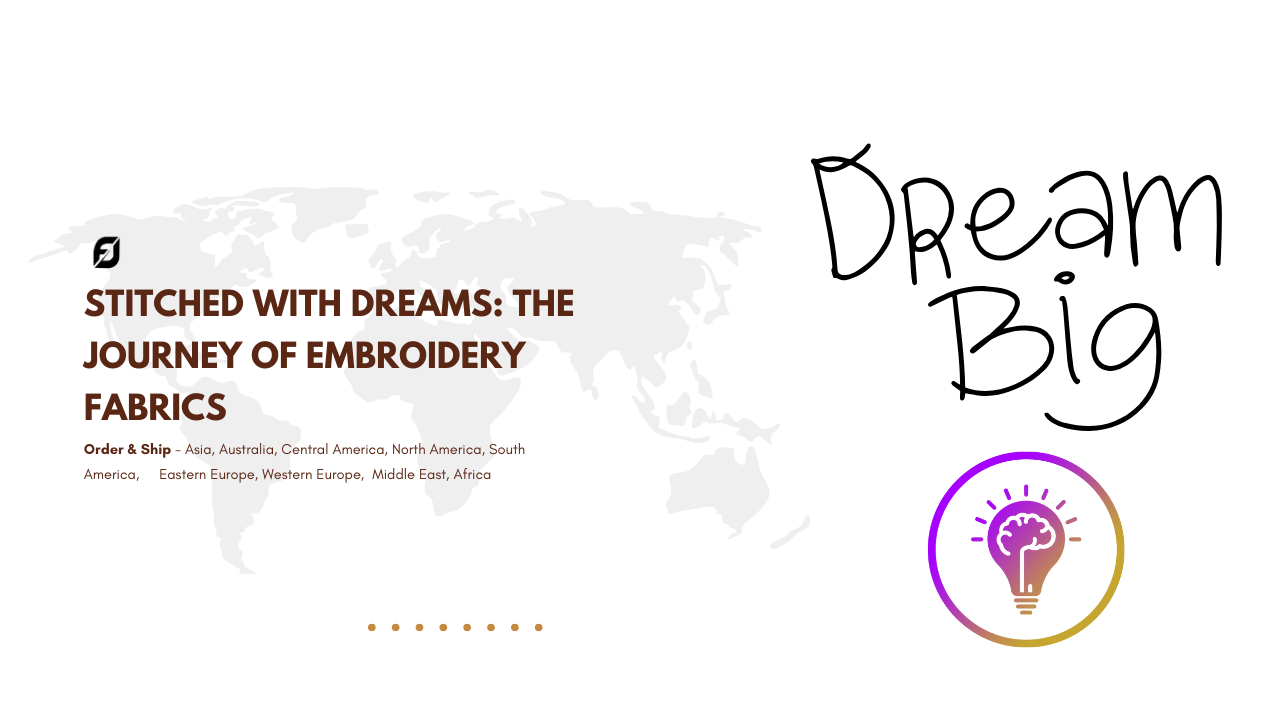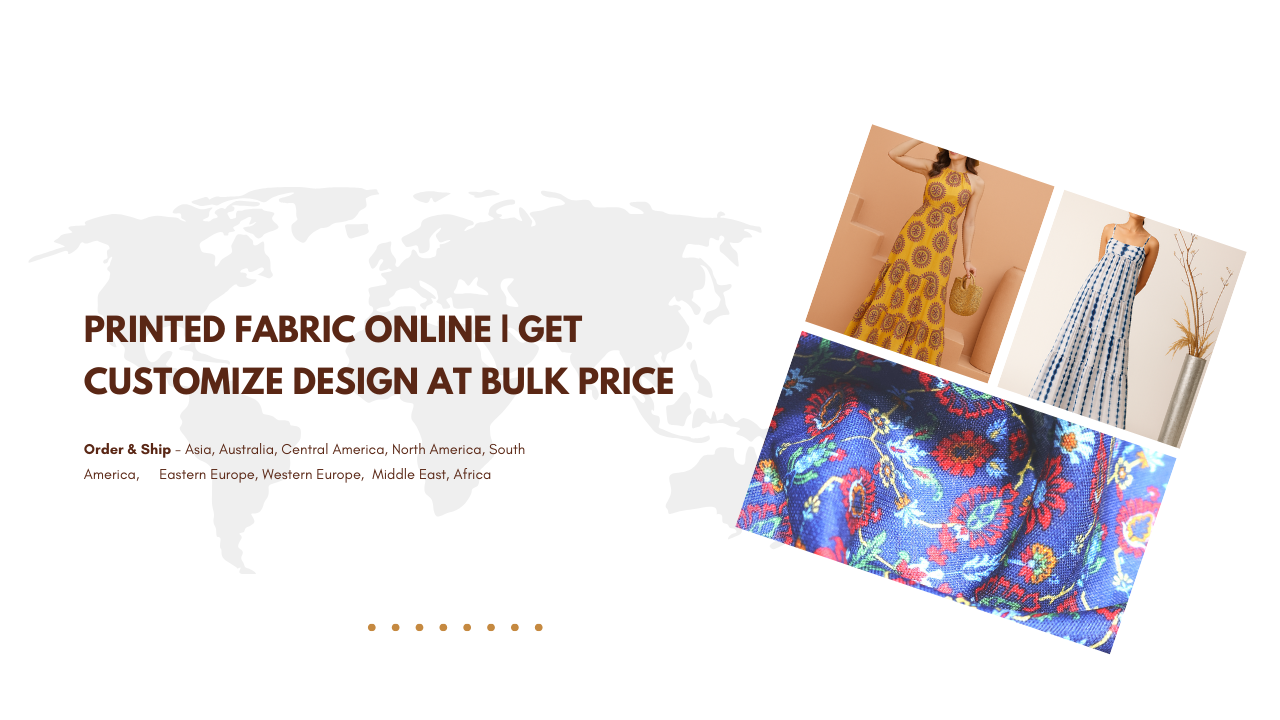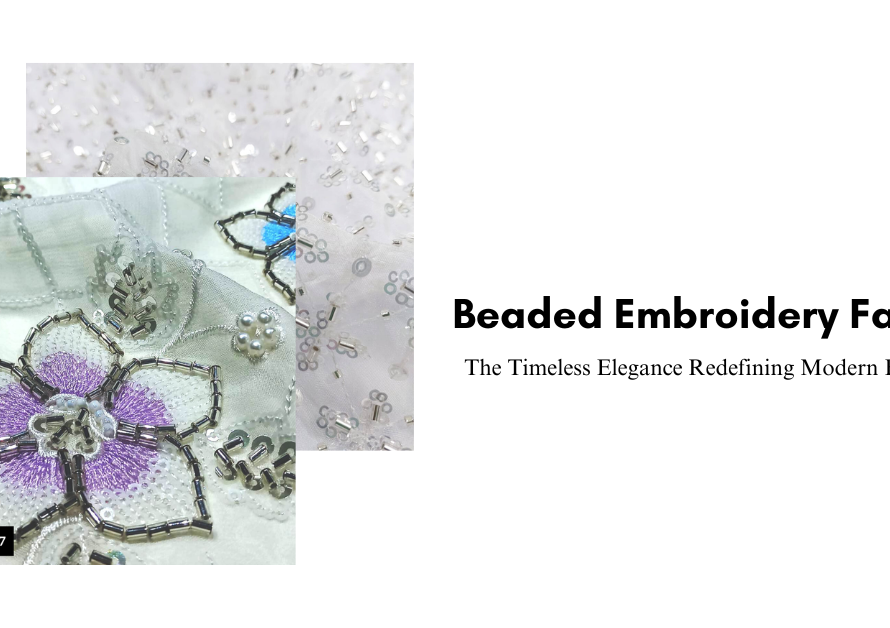Kora Cotton, known for its delicate beauty and high versatility, has become a favorite choice among designers, manufacturers, and fabric enthusiasts worldwide.
This article explores everything about Kora Cotton, from its appearance and material composition to its ideal print styles and global popularity.
Kora Cotton Printed Fabric: A Complete Guide for Garment Manufacturers and Designers
What is Kora Cotton?
Kora Cotton is a type of unbleached and untreated cotton fabric, prized for its soft texture, lightweight feel, and natural appeal. The term “Kora” refers to raw or “greige” fabric that retains its original characteristics without any artificial treatments. It is popular for making a variety of garments due to its breathability, comfort, and eco-friendly attributes.
Color and Purity: Is Kora Cotton White or Off-White? Organic or Pure?
Typically, Kora Cotton appears in an off-white shade, which comes from its untreated and unbleached nature. This color provides an ideal base for dyeing and printing without additional processes. Kora Cotton is made from pure cotton, making it a natural and breathable fabric, and it is often associated with organic cultivation. Organic Kora Cotton is widely available, adding to its appeal for eco-conscious designers and brands.
Ideal Prints for Kora Cotton
Kora Cotton beautifully complements various prints, and its natural, off-white color makes it versatile for different styles. Here are some prints that look especially attractive on Kora Cotton:
- Floral Prints: Ideal for light and breezy outfits.
- Geometric Designs: Adds a contemporary touch to traditional fabric.
- Ethnic Motifs: Suits both modern and traditional fashion.
- Abstract Patterns: Brings a unique and artsy vibe to the fabric.
Types of Garments Made from Kora Cotton
The versatility of Kora Cotton allows it to be crafted into a range of garment styles. Some popular options include:
- Sarees and Salwar Suits: Preferred for their elegance and comfort.
- Dresses and Kurtis: Perfect for casual to semi-formal wear.
- Shirts and Tops: Ideal for summer wear, as Kora Cotton keeps you cool.
- Kidswear: Safe, soft, and breathable, making it a good choice for children’s clothing.
Global Popularity: Where is Kora Cotton Famous?
Kora Cotton’s popularity isn’t limited to India; it’s also appreciated globally. In India, it is a preferred choice for ethnic wear like sarees and kurtis. Beyond India, Kora Cotton is well-regarded in Asia, Europe, the USA, and Canada for its natural texture, eco-friendliness, and suitability for a variety of climates. Its sustainability factor also makes it a favorite in regions with a strong eco-conscious fashion movement.
Can Heavy Outfits Be Made from Kora Cotton?
While Kora Cotton is generally known for its lightweight nature, it can also be used to create heavy outfits. By adding embellishments like embroidery, sequins, or layering with other fabrics, designers can transform Kora Cotton into statement-making heavy outfits. However, it remains comfortable to wear, even with added embellishments.
Madhav Fashion’s Quality Kora Cotton Printed Fabric
Madhav Fashion stands out for producing premium-quality Kora Cotton printed fabric, crafted with high standards to ensure durability and aesthetic appeal. Known for offering a wide range of print styles, Madhav Fashion’s Kora Cotton is preferred by many brands, designers, and fabric wholesalers worldwide. Their fabric quality ensures vibrant prints that remain long-lasting, suitable for both lightweight casual wear and embellished heavy outfits.
____________________________________________
What Makes Kora Cotton (Kora Cotton Printed Fabric) Unique Among Cotton Fabrics?
Kora Cotton (Kora Cotton Printed Fabric) stands out for its raw, unbleached nature, often referred to as “greige” or untreated cotton. This gives it a natural off-white appearance and a soft, breathable texture, unlike other cotton types that are typically processed or dyed. Its organic composition is another distinctive factor; Kora Cotton is often cultivated without synthetic pesticides or fertilizers, making it an eco-friendly choice.
This natural aspect makes it softer and more comfortable, which is ideal for creating airy, breathable clothing. Additionally, Kora Cotton is highly versatile, serving as a great canvas for prints and dyes, offering endless design possibilities without losing its raw appeal.
The fabric’s durability and natural stretch make it ideal for a variety of garments, from sarees to dresses. As more consumers and brands turn toward sustainable fashion, Kora Cotton has gained traction worldwide, especially among eco-conscious brands and designers. Its adaptability across different fashion styles and climate suitability enhances its popularity in regions like India, Asia, the USA, and Europe. Thus, Kora Cotton is celebrated for its natural feel, sustainability, and versatility, which sets it apart from other cotton fabrics.
Is Kora Cotton (Kora Cotton Printed Fabric) Suitable for Sensitive Skin?
Yes, Kora Cotton (Kora Cotton Printed Fabric) is ideal for sensitive skin, thanks to its natural, untreated composition. Unlike many processed fabrics, Kora Cotton is free from harsh chemicals and dyes, making it hypoallergenic and gentle on the skin. The breathable nature of Kora Cotton allows air circulation, reducing the risk of irritation caused by heat or sweat. This quality is particularly beneficial for those with skin conditions like eczema, as it doesn’t trap moisture or cause discomfort.
Furthermore, organic Kora Cotton (Kora Cotton Printed Fabric) is grown without synthetic pesticides, meaning fewer chances of residual chemicals on the fabric, which can often trigger skin reactions. The fabric’s smooth texture and lightweight feel make it especially popular for summer clothing, where breathability and skin comfort are priorities. Parents also prefer Kora Cotton for children’s clothing, as it minimizes the risk of skin irritations and allergies. Overall, Kora Cotton’s natural composition and hypoallergenic properties make it one of the best choices for individuals with sensitive skin, adding to its appeal as a fabric that’s both comfortable and safe.
What Are the Most Popular Prints for Kora Cotton?
Kora Cotton serves as an excellent canvas for a range of prints, thanks to its natural off-white color and absorbent quality. Floral prints are particularly popular on Kora Cotton, as the fabric’s softness complements the delicate nature of floral patterns, perfect for spring and summer wear. Geometric designs also look striking, offering a modern twist that appeals to contemporary fashion. Ethnic motifs, such as paisleys and traditional Indian patterns, make Kora Cotton a favorite for sarees and ethnic wear.
These prints allow designers to merge tradition with comfort, creating garments that are both fashionable and culturally resonant. Abstract and artistic prints are other popular choices, adding a unique flair that appeals to more creative and avant-garde styles. Because of its natural composition, Kora Cotton absorbs dyes well, resulting in vibrant, long-lasting prints that do not fade easily. Overall, Kora Cotton’s versatility in prints makes it popular across a variety of fashion styles, allowing for personal expression and creativity while maintaining the fabric’s natural appeal.
Can Heavy Outfits Be Made from Kora Cotton?
Yes, Kora Cotton can be used to create heavy outfits, especially with the addition of embellishments. While Kora Cotton is typically known for its lightweight feel, designers can craft heavier garments by incorporating elements such as embroidery, sequins, or layering it with other fabrics. This makes it possible to create luxurious sarees, lehengas, or gowns that are suitable for formal events.
The fabric’s durability also allows it to support such embellishments without compromising comfort, offering a balance of style and ease of wear. Another advantage of using Kora Cotton for heavy outfits is its breathability, which ensures that even layered or embellished garments remain comfortable in warmer climates. For designers aiming for sustainable fashion, Kora Cotton provides a base for creating eco-friendly yet elaborate attire. With the growing trend of minimalistic yet opulent fashion, Kora Cotton’s adaptability in heavy outfits allows for the perfect mix of sustainability and sophistication. This versatility has made it increasingly popular in bridal and festive wear collections globally.
What Types of Garments Are Commonly Made from Kora Cotton?
Kora Cotton is used in a wide variety of garments due to its versatility and natural comfort. In India, Kora Cotton sarees and salwar suits are particularly popular, as they provide a lightweight yet elegant option suitable for both daily wear and special occasions. Dresses and kurtis made from Kora Cotton are also common, especially in regions with warmer climates where breathable fabrics are essential.
Kora Cotton shirts and tops are growing in popularity as well, as they offer a casual yet refined look. This fabric is also an excellent choice for kidswear, thanks to its soft texture and hypoallergenic properties, making it safe and comfortable for children. In recent years, Kora Cotton has found its way into western-style apparel like skirts, tunics, and summer dresses, appealing to an international audience. The fabric’s adaptability has allowed it to become a staple across various fashion styles, from ethnic to modern, making it a preferred choice for designers and garment manufacturers worldwide.
Why is Kora Cotton So Popular in India and International Markets?
Kora Cotton has gained popularity in both India and international markets due to its sustainable and versatile properties. In India, Kora Cotton is especially valued for ethnic wear, like sarees and kurtis, as its natural texture complements traditional prints and motifs. Its lightweight feel is ideal for the country’s warm climate, making it a popular choice for everyday clothing. Internationally, Kora Cotton is celebrated for its eco-friendly attributes.
As more brands and consumers shift toward sustainable fashion, Kora Cotton’s organic, untreated composition appeals to a growing audience that values environmentally conscious materials. In regions like Europe, the USA, and Asia, Kora Cotton is appreciated not only for its sustainable properties but also for its adaptability across fashion styles, from bohemian dresses to minimalistic tops. The fabric’s natural feel and hypoallergenic properties make it suitable for all skin types, further increasing its appeal. Thus, Kora Cotton’s global popularity is driven by its alignment with both traditional aesthetics and modern sustainability trends.
How Does Madhav Fashion Ensure High-Quality Kora Cotton Printed Fabric?
Madhav Fashion is renowned for its commitment to quality in Kora Cotton printed fabric. Their production process begins with sourcing premium-grade, pure cotton, ensuring that the fabric retains its natural softness and strength. Madhav Fashion employs state-of-the-art printing technology to ensure that prints on Kora Cotton are vibrant and durable, maintaining their color and texture even after repeated washes.
Quality control is a top priority, with each batch of fabric undergoing thorough inspections to ensure consistency in weave, texture, and print quality. Madhav Fashion also prioritizes sustainable practices, using eco-friendly dyes that enhance the fabric’s organic appeal without compromising on vibrancy. Their Kora Cotton is crafted to cater to a wide range of garment styles, making it ideal for designers and brands who seek high-quality, dependable materials. By consistently delivering superior Kora Cotton, Madhav Fashion has earned a reputation for excellence, making it a go-to supplier for garment manufacturers, designers, and fabric wholesalers worldwide.
Is Kora Cotton Eco-Friendly?
Yes, Kora Cotton is considered highly eco-friendly, particularly because it is unbleached and untreated. This means that it retains its natural state, requiring minimal processing and reducing environmental impact. Organic Kora Cotton, which is increasingly available, is grown without synthetic pesticides or fertilizers, making it a safer option for the environment and consumers. Kora Cotton’s eco-friendliness also extends to its dyeing process, as its off-white color serves as a great base for natural and low-impact dyes.
This further reduces the need for harmful chemicals and water usage. The fabric’s durability also promotes longevity, encouraging a more sustainable approach to fashion by reducing the need for frequent replacements. With sustainability becoming a major concern for both brands and consumers, Kora Cotton’s eco-friendly properties make it an attractive choice for those who value environmentally conscious products. Thus, its combination of natural texture, low environmental impact, and sustainability positions Kora Cotton as a leading fabric in eco-conscious fashion.
How is Kora Cotton Maintained and Cared For?
Kora Cotton is relatively easy to maintain due to its natural, untreated composition. For the best results, it’s recommended to hand wash or machine wash Kora Cotton in cold water, as hot water can cause shrinkage. Since Kora Cotton is prone to wrinkling, air drying it flat or using a low-heat setting on the dryer is best to retain its shape and texture.
Avoiding harsh detergents helps preserve the fabric’s natural qualities, as strong chemicals may wear down its fibers. For printed Kora Cotton, mild detergents are advised to ensure that the prints retain their vibrancy. It’s also recommended to iron Kora Cotton at a low temperature, as high heat may affect its texture. With proper care, Kora Cotton fabrics can last for years without losing their softness or aesthetic appeal. The fabric’s durability and easy-care routine make it an ideal choice for everyday garments, providing comfort without extensive maintenance needs.
What Are the Differences Between Kora Cotton and Regular Cotton?
Kora Cotton differs from regular cotton primarily in its treatment and appearance. While regular cotton often undergoes bleaching, dyeing, or chemical treatments to achieve a uniform white color, Kora Cotton is unbleached and untreated, retaining a natural off-white shade. This raw form is known as “greige” cotton and makes Kora Cotton softer and more breathable than heavily processed cotton.
Kora Cotton is also typically more eco-friendly, as it is often grown organically, without synthetic pesticides or fertilizers, making it safer for both the environment and the wearer. Another key difference lies in texture: Kora Cotton has a more natural feel, whereas regular cotton may feel stiffer or smoother due to the treatments it undergoes. For consumers interested in sustainability, Kora Cotton is a more appealing choice due to its minimal environmental impact. Its unique properties, such as softness, breathability, and eco-friendliness, make it a versatile and sought-after alternative to regular cotton in the fashion industry.






